Here’s a second stab at a difficult conversation article. The first one (Reference 1) didn’t quite managed to get us cancelled, so I thought I’d have another go. Largely prompted by a client, who asked recently, how do you detect whether something is ‘woke’ or not? We like questions like that. Questions, in other words, where there’s a desire to measure something that, it turns out, the world doesn’t appear to have fully understood what it is yet.
In which case, Job 1 is to try and unravel the various different interpretations. Here’s a paraphrase of a commonly used definition:
Woke is an adjective meaning “alert to injustice”. It originated in African-American Vernacular English and was primarily concerned with encouraging people to become awake to racial prejudice. Beginning in the 2010s, it has come to encompass a broader awareness of social inequalities such as sexism, Amererican Left ideas involving identity politics and social justice. The phrase ‘stay woke’ had emerged in the 1930s, in some contexts referring to an awareness of the social and political issues affecting African Americans. The phrase was uttered in a recording by Lead Belly. Following the shooting of Michael Brown in Ferguson, Missouri in 2014, the phrase was popularised by Black Lives Matter (BLM) activists seeking to raise awareness about police shootings of African Americans. More recently still, the woke waters have become further muddied by predominantly alt-right bubbles of the Social Media echo chamber and extensions ‘wokery’ and ‘woke-ism’ have been weaponised to criticise people – usually in arguments surrounding identity politics – to dethrone terms like ‘politically correct’ and ‘snowflake’ as the insult du jour for many internet trolls wishing to mock the so-called ‘hypersensitivity’ of the left.
When something has apparently turned into an ‘ism’, it’s a pretty good indication that there’s a Goldilocks Curve somewhere in the vicinity. Which in turn means there’s some kind of contradiction that needs to be, first, recognised, then managed, and ultimately, transcended. Each becoming increasingly difficult to achieve. And definitely doesn’t get helped while the Echo Chamber Machine keeps the two ends of the contradiction from talking to one another.
First up, let’s take a shot at drawing the Goldilocks Curve in order to help reveal the physical contradiction…
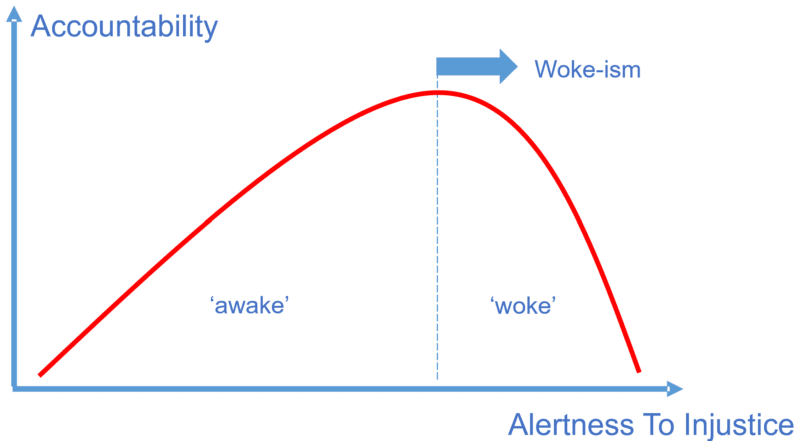
…and here’s that physical contradiction – we want high levels of alertness to injustice and we want low levels of alertness to injustice – translated into a Bubble Map:
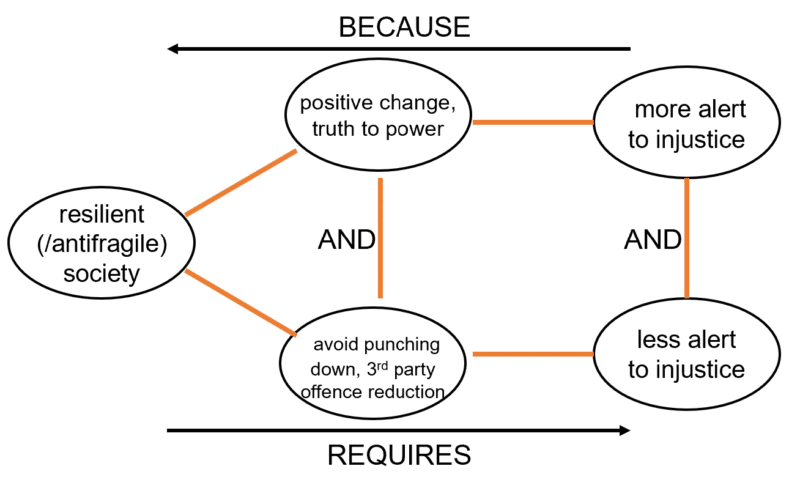
Having obtained this picture, we’re now in a position to utilise three different approaches to manage, transcend or dissolve the contradiction. Let’s start with the easier option, because this one also allows us to close the loop on the client measurement problem that provoked this investigation:
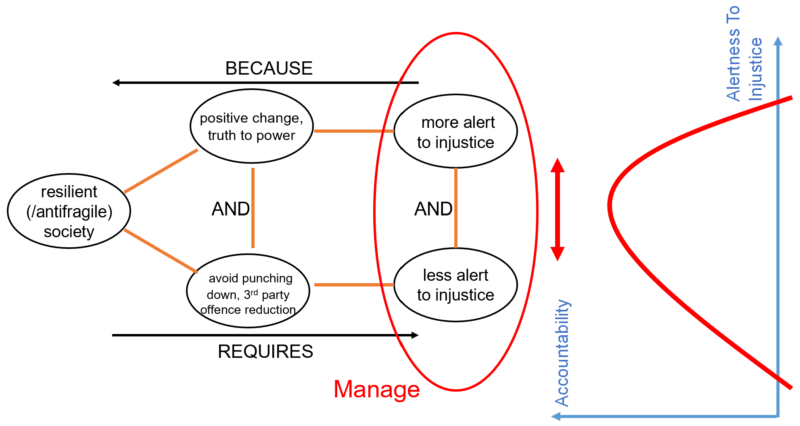
Managing – the key to managing the woke contradiction starts with the need to be able to work out where the peak of the Goldilocks Curve lies. This challenge in turn takes us right to the heart of the need for a solid definition for woke and wokeism. Here are a couple of candidates:
- Punching-Up/Punching-Down – in its original meaning, being awake to injustice also came with a punching-up obligation to challenge those in power to correct those injustices. In it’s ‘ism’ form, the direction of challenge shifts to the somewhat easier punching downward direction. Such as attacking random powerless people that happened to say something that didn’t fit our own view of the world. As if this will somehow make us feel better about ourselves…
- …it won’t, of course, because the second ‘ism’ indicator is that individuals cease wanting to be held to account for their inevitably imperfect actions, and, partly through guilt, increasingly decide to hold everybody else to account. A switch most visibly identified by shifts in the types of pronouns found in a person’s narrative: from ‘it’s not you, it’s me’ to ‘it’s not me, it’s you.’ To which the most sensible response is, thankyou Jordan Peterson, “set your own house in perfect order before you criticise the world”
Transcending – here’s where we focus on the central ‘conflict’ part of the Bubble Map and an intention to eliminate rather than ‘optimise’ the problem:
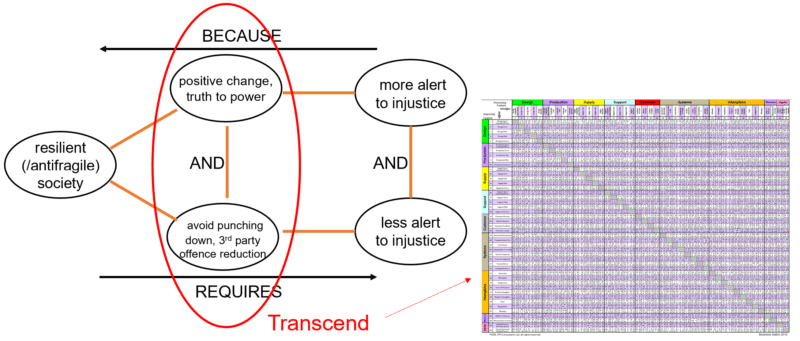
Here the most likely solution directions start from Taking Out the desire to punch-down, increasing Transparency, escaping from Echo Chambers and Merging the other side of the Goldilocks Curve arguments, switching the problem the Other Way Around and putting your own affairs in order, and then helping to establish Self-reinforcing feedback loops that help prevent the formation of dysfunctional vicious cycles (Reference 2).
On that latter front, here’s the usual vicious cycle of despair created when we fall victim to Echo Chamber culture and thus increasingly fail to recognise that another side to our views of the world even exist:
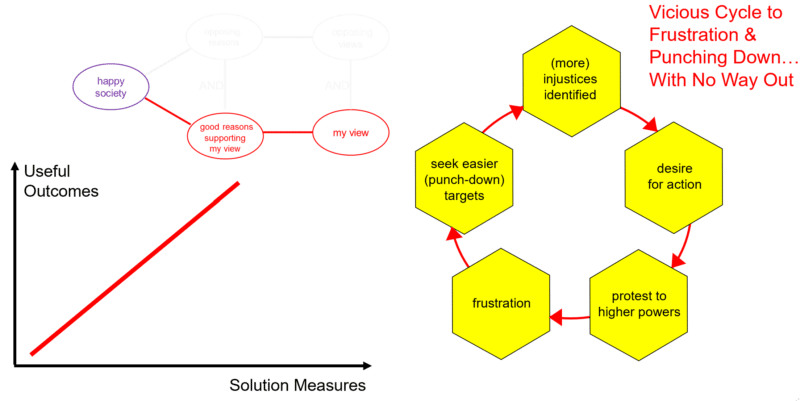
If you only see half the truth, in other words, you also fail to see the Goldilocks Curve and hence fool yourself into thinking that a fundamentally up-down curve only has the up side. Which, if you’re not careful, can easily become a shortcut to mental illness.
References
- SIEZ, ‘Difficult Conversations #1: Binary-Non-Binary’, Issue 237, December 2021.
- SIEZ, ‘The Morality Of Toast’, Issue 180, March 2017.
